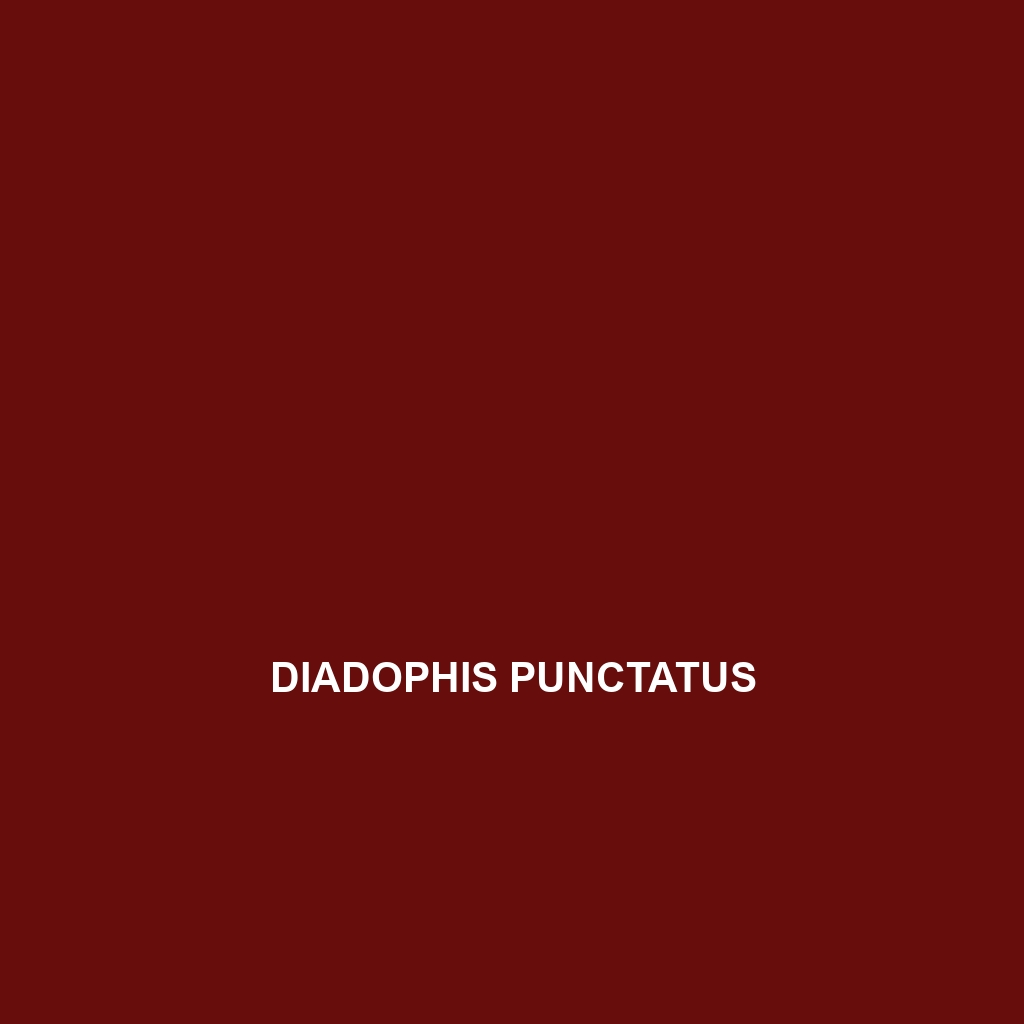Species Description: Diadophis punctatus
Common Name: Diadophis punctatus
Scientific Name: Diadophis punctatus
Habitat
Diadophis punctatus, commonly known as the Eastern Ringneck Snake, is primarily found throughout North America, from southern Canada to northern Mexico. These snakes thrive in a variety of environments, including forests, grasslands, and suburban areas, often inhabiting moist habitats such as wetlands and near streams. Their adaptability allows them to occupy diverse ecological niches, making them a common sight in their range.
Physical Characteristics
Measuring between 20 to 30 inches in length, the Eastern Ringneck Snake typically displays a striking appearance. The dorsal side features a smooth, dark coloration, which can range from brown to black, while the ventral side is usually a bright yellow or orange, often adorned with a defining ring around the neck. This characteristic coloration serves as a warning mechanism to potential predators. Their slender body and small head make them easily distinguishable among other snake species.
Behavior
Diadophis punctatus is primarily active during the evening, exhibiting crepuscular habits. This snake is known for its secretive nature, often hiding under rocks, leaf litter, or logs. When threatened, this species may display a defensive behavior by coiling and exposing its bright belly, which may confuse or deter predators. This behavior is particularly interesting to herpetologists and wildlife enthusiasts.
Diet
The diet of Diadophis punctatus mainly consists of earthworms, slugs, and small amphibians. These snakes are non-venomous and rely on constriction to subdue their prey. Their feeding mechanism showcases their role as both predator and prey in the ecosystem, contributing to the balance of their local environment. Their dietary preferences may vary slightly based on their habitat.
Reproduction
Diadophis punctatus engages in mating during the spring months, with females usually laying clutches of 3 to 10 eggs in late spring or early summer. The eggs incubate for approximately two months before hatching. Young snakes emerge fully formed and capable of independent feeding. This fascinating reproductive cycle allows for the continued presence of this species in suitable habitats.
Conservation Status
Currently, the conservation status of Diadophis punctatus is categorized as Least Concern by the International Union for Conservation of Nature (IUCN). However, habitat destruction and environmental pollutants pose potential threats to local populations. Continued monitoring and conservation efforts remain essential to ensure the stability of their populations.
Interesting Facts
One unique aspect of Diadophis punctatus is its capable of secreting a mild toxin from its saliva that can deter smaller predators. Additionally, this species showcases a remarkable ability to adapt to urban environments, often thriving in areas altered by human activity. Their captivating appearance and behavior make them a popular subject for study and observation.
Role in Ecosystem
Diadophis punctatus plays a vital role in its ecosystem by controlling the populations of its prey, particularly earthworms and slugs, which can be agricultural pests. As both predators and prey, these snakes contribute to the ecological balance, serving as a food source for larger predators such as birds of prey and mammals. Their presence in various habitats underscores the importance of maintaining biodiversity in our natural environments.
